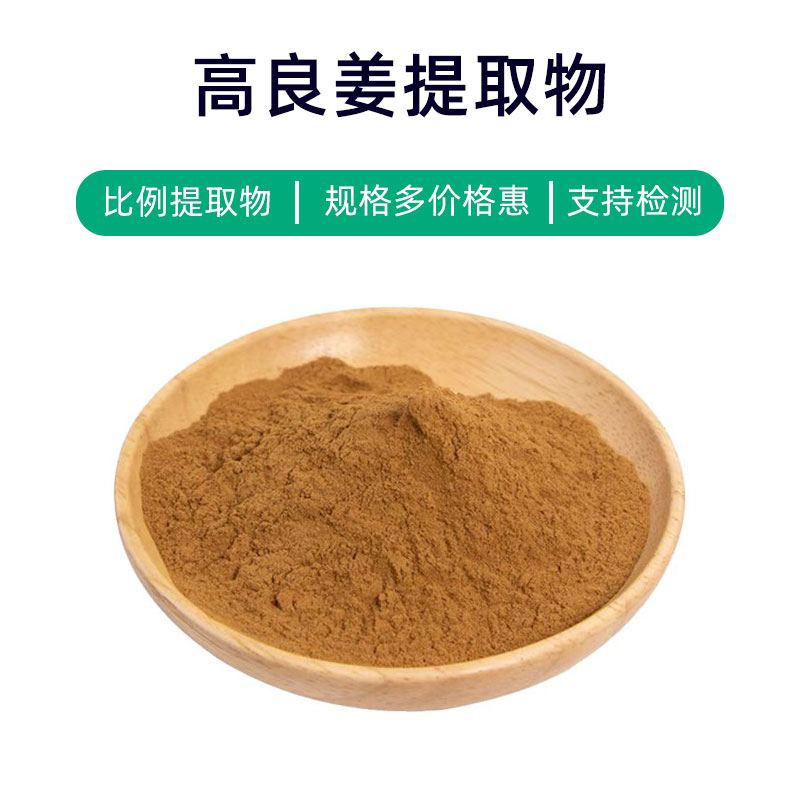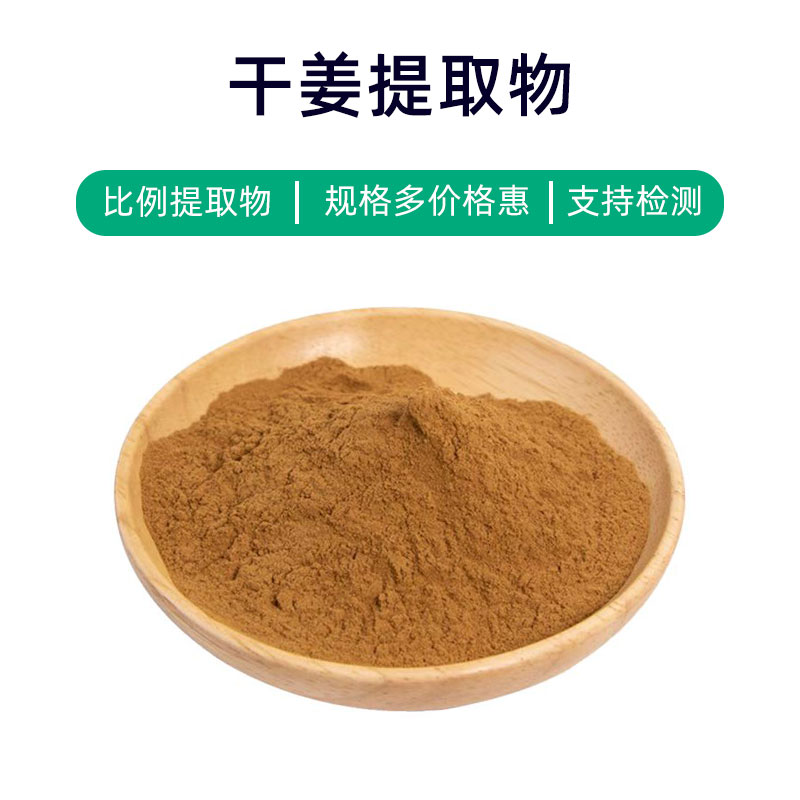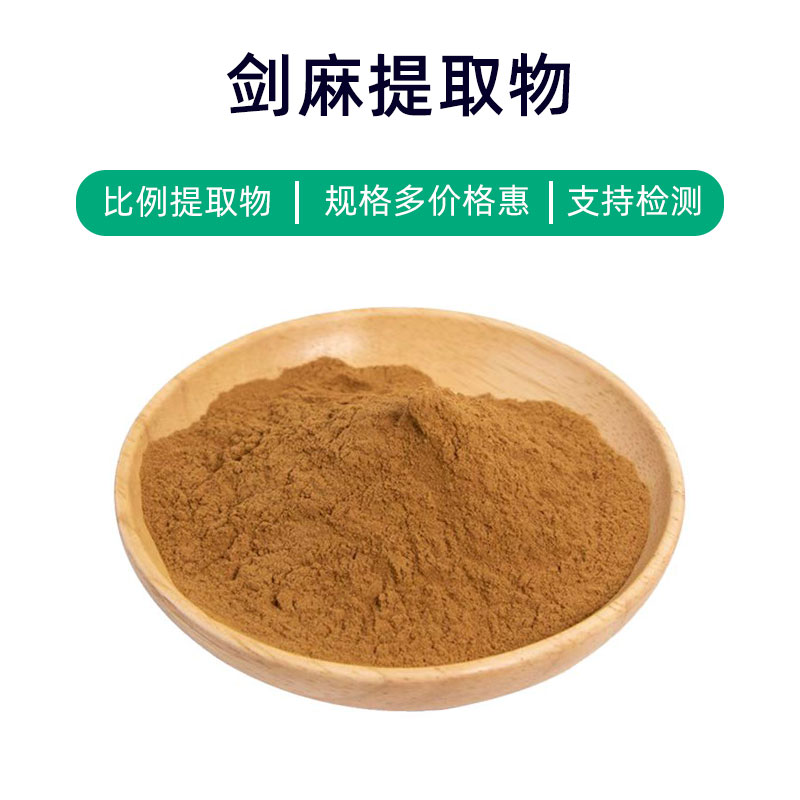Introduction to Astragalus Extract
Astragalus Extract is a natural plant extract obtained from the roots of the Astragalus plant. Its main components include flavonoids, polysaccharides, and other active ingredients. Astragalus Extract is extensively used in health supplements, pharmaceuticals, food, and cosmetics.
As a health supplement, Astragalus Extract is known to regulate immune function, boost physical endurance, and enhance antioxidant capacity. The polysaccharides in Astragalus Extract can strengthen the immune system, helping the body resist disease and fatigue. Additionally, it is used as an adjunct in various medications to improve the internal environment and enhance disease resistance.
In the food sector, Astragalus Extract is often added to a variety of health foods, such as health teas and beverages, to boost immunity and improve physical condition. In cosmetics, it is commonly found in skincare products, helping the skin resist environmental damage with certain antioxidant and anti-inflammatory effects, contributing to skin health and vitality.
In summary, as a natural plant extract, Astragalus Extract has various benefits and is widely used in health supplements, pharmaceuticals, food, and cosmetics, providing valuable support for health and beauty.
Production Process of Astragalus Extract
The production process of Astragalus Extract typically includes the following main steps:
- Raw Material Preparation: Select fresh, high-quality Astragalus roots as extraction materials, cleaning and removing impurities, cutting them into small pieces for further extraction.
- Rough Extraction: Soak or heat the processed roots in an appropriate solvent (such as water or ethanol) to dissolve the active components, resulting in a rough extract.
- Concentration of Extract: Concentrate the rough extract using methods such as evaporation or vacuum concentration to increase the concentration of active ingredients.
- Separation of Extract: Filter, centrifuge, or precipitate the concentrated extract to separate suspended solids and solutes, yielding a clear extract.
- Degradation and Purification: Degrade and purify the extract to remove impurities and unwanted components, enhancing product purity and activity.
- Drying and Grinding: Dry the purified Astragalus Extract to remove moisture, then grind it into a powdered form.
- Packaging and Storage: Package the powdered Astragalus Extract according to specifications, typically using moisture-proof, sealed packaging, and store in a cool, dry environment away from direct sunlight and high temperatures.
The above represents a typical production process for Astragalus Extract, although different manufacturers may adjust and improve the process based on specific circumstances to ensure product quality and efficiency.
Benefits and Side Effects of Astragalus Extract
Astragalus Extract, derived from the roots of the Astragalus plant, is widely used in medicine, health supplements, and cosmetics. Its main benefits and effects include:
- Immune Regulation: Astragalus Extract contains various bioactive components, such as flavonoids and polysaccharides, known for their significant immune-regulating properties, enhancing immunity and resistance to infections and inflammation.
- Anti-Fatigue: The flavonoids in Astragalus Extract possess antioxidant properties, helping to alleviate fatigue, increase stamina, and combat various stress and fatigue states.
- Qi and Blood Supplementation: Traditionally, Astragalus Extract is believed to replenish Qi and nourish blood, helping to adjust Qi and blood balance, and improve symptoms of anemia, weakness, and fatigue.
- Antioxidant Effects: The polyphenolic compounds in Astragalus Extract have antioxidant capabilities, clearing free radicals, delaying cellular aging, and protecting cell structure and function.
- Blood Sugar Regulation: The polysaccharides in Astragalus Extract can help regulate blood sugar levels and improve insulin sensitivity, providing supportive treatment for diabetes.
- Liver Protection: Components like flavonoids and polysaccharides in Astragalus Extract help protect the liver, reduce liver damage, promote cell regeneration, and improve liver function.
- Anti-Inflammatory and Pain Relief: Some active components in Astragalus Extract exhibit anti-inflammatory and analgesic effects, alleviating inflammation and pain symptoms, useful as adjunctive therapy for diseases like rheumatoid arthritis.
In general, Astragalus Extract is considered safe; however, attention should be paid to the following considerations during use:
- Pregnant or nursing women and children should use it under medical guidance.
- Individuals allergic to Astragalus should avoid it, and some may experience allergic reactions; discontinue use immediately if discomfort occurs.
- Carefully read the product instructions before use and adhere strictly to the recommended dosage, avoiding excessive use.
- If adverse reactions or persistent discomfort occur, stop use and consult a physician.
Usage and Dosage of Astragalus Extract
As a natural plant extract, Astragalus Extract has widespread applications in pharmaceuticals, food, and cosmetics. Below are the applications and usage guidelines in these three areas:
- Pharmaceutical Applications:
- Uses: Astragalus Extract is commonly included in traditional Chinese medicine formulations, such as granules, pills, and oral liquids, to regulate immunity, improve disease resistance, and replenish Qi and blood.
- Dosage: Generally, adults take 2-3 grams of Astragalus Extract granules per dose, 2-3 times daily; dosage for children depends on age and weight and should be taken under medical guidance.
- Food Applications:
- Uses: Astragalus Extract can be used as a health food ingredient, processed into capsules, tablets, or beverages, to enhance immunity, improve stamina, and combat fatigue.
- Dosage: Usually follows the dosage prescribed in the product instructions, typically taken 1-3 times daily, with each dose consisting of 1-3 capsules, or adjusted according to individual needs.
- Cosmetic Applications:
- Uses: In cosmetics, Astragalus Extract is often included in skincare products and masks, known for their antioxidant, anti-aging, and soothing properties that improve skin texture and strengthen skin resistance.
- Dosage: Apply according to the directions on the cosmetic product label, usually on clean skin, massaging until absorbed; it is recommended for daily use 1-2 times.
Overall, Astragalus Extract is mainly used in the pharmaceutical field as part of traditional medicine to regulate immunity and enhance disease resistance; in the food sector, it serves as a health food ingredient for boosting stamina and combating fatigue; and in cosmetics, it is used in skincare products for its antioxidant and anti-aging properties. Users should adhere to the product instructions for proper usage and adjust dosages as needed based on individual circumstances.
Introduction to the Source Plant of Astragalus Extract: Distribution and Growth Environment
Astragalus (Scientific name: Astragalus membranaceus) is a perennial herb belonging to the legume family. It typically grows in regions such as China, Mongolia, Korea, and Russia and is an important component of traditional Chinese medicine. Below are detailed descriptions of the source plant, distribution, and growth environment of Astragalus:
- Source Plant Description:
Astragalus is a semi-evergreen herb with upright stems, feather-like compound leaves, and oval or oblong leaflets arranged alternately. The flowers are small, butterfly-shaped, usually yellow or purple, and grow in umbel-like clusters. The roots are cylindrical, yellowish-brown on the outside, and have significant medicinal value. - Distribution:
Astragalus is widely distributed in regions of China, including the Loess Plateau, Henan, Shanxi, Shaanxi, Gansu, Ningxia, and Qinghai, as well as Mongolia, Korea, and Russia. It primarily grows below 1500 meters in elevation and thrives in dry, sandy, or fertile soils. - Growth Environment:
Astragalus prefers sunny environments with mild climates and good ventilation. It is not particularly demanding regarding soil but tolerates drought and cold well. It grows best in loose, fertile loam or sandy loam. Commonly found in grasslands, mountains, forest edges, and desert fringes, it is a widespread wild plant.
As an important medicinal herb, the roots of Astragalus contain abundant medicinal components, making it widely used in traditional medicine, health supplements, and food. Wild-harvested Astragalus is often collected as a medicinal material, while it can also be cultivated. Differences in growth conditions across environments can affect its medicinal value.
Processing and Storage of Astragalus Extract
The processing of Astragalus Extract typically includes the following steps: first, harvesting the roots, then cleaning, air-drying, or dehydrating to remove impurities and moisture. Next, the roots are roughly processed by slicing or chopping. Following this, suitable extraction methods such as water or alcohol extraction are employed to extract the effective components from Astragalus. Finally, through filtration, concentration, and drying, the final product of Astragalus Extract is obtained.
For storage, Astragalus Extract should be kept in a dry, cool, and well-ventilated environment, avoiding direct sunlight and moisture. Additionally, it should be protected from contact with harmful substances, ensuring that the storage containers are clean and sealed. During storage, the appearance and properties of the Astragalus Extract should be checked regularly to ensure product quality and stability.
Monica Sun is a seasoned expert in the plant extraction industry with over a decade of experience in research and production. She specializes in the extraction and purification of plant active ingredients, focusing on driving innovation in natural product applications. Monica has participated in the development of multiple functional plant extracts, delivering high-value natural raw material solutions for the health food, pharmaceutical, and dietary supplement sectors.



















